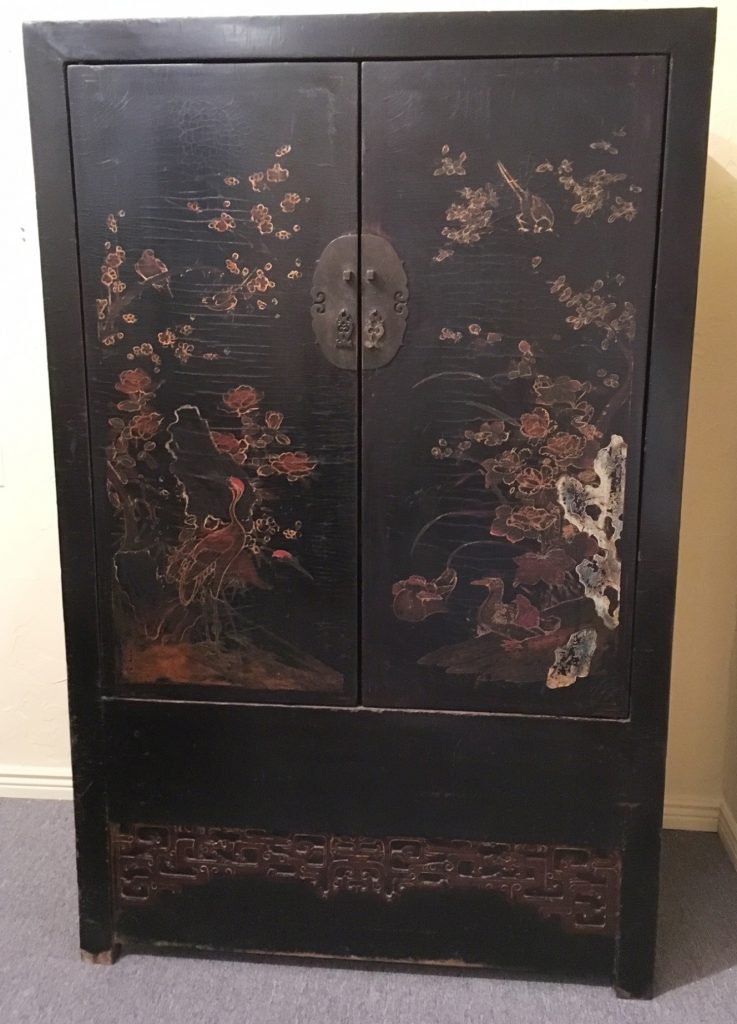
Early-Mid18th C, Elm, Shanxi. “Duawen” crackling look and screen paintings with “Scholar’s Rock” treasured by Ming elite scholars.
This cabinet is constructed in the ‘Si-ping’ (four-sides-square) style, with flushed door panels fitted with pivot hinges. There is no central removable stile. The brass lock-plates and confronting-dragons motif pulls are original.
The side panels of this chest are devoid of painted decoration, but the two front panels are beautifully painted with scenery resembling a screen painting. On the doors are paintings of birds and waterfowls frolicking among flowering trees and shrubs, and a big scholar’s rock prominently in white by the shore of a pond. The scenery is painted against a dark lacquered background.
The painting is well-done with understated shades of reds and blues, highlighted with gilding in a technique similar to “Miaojin” (lit.’trace in gold’), a technique using colored lacquers highlighted with finely drawn gold lines to depict painterly scenes against a solid lacquer ground. This technique was popular during the Ming period. The white scholar’s rock draws one’s eyes to the panels. Scholar’s rocks are prized by literati of the period; highlighting it on the panel suggests this cabinet was made at the request of someone of the scholar/high official class who collected these highly priced rocks. The crackled look on the door panels came from the fact that this cabinet has very thick layers of lacquer (always a sign of good quality) which tend to crack with age. According to the author, Craig Cunas, who wrote a series, “Chinese Furniture” for the Victoria and Albert Museum, furniture with a somber tone on black lacquer and crackling were treasured by Ming and early Qing literati, who considers “duawen”, the distinctive crackling seen on old lacquer, highly desirable as it is testimony to the authenticity of an antique piece.
Below the pair of painted doors is a black lacquered horizontal panel, which hides additional storage space behind. The smooth surface of the dark panel contrasts beautifully with a recessed wide apron below which has red pierced carvings of a stylized ‘long life’ character in the center, embraced on either side by running dragons. (The “running dragon” design was a prevalent design during Emperor Qianlong’s reign). The framework and side panels have some lacquer slightly peeled off from aging. The fine crackling lines on the pair of doors give it an interesting suede leather look and impart a sense of waves rippling on the top of the pond in the painting. The interior compartment has two shelves and a removable board hiding extra storage space.
This all-original cabinet survived with a wonderful patina. The matte-finish look on the decorative door panels is the result of transparent lacquer darkening with age, a degenerative process lacquer specialists agree result in clouding the tonality of the lacquer finish. This cloudy look should not be covered up by any restoration means or it would diminish the value of the piece. In our case the crackled lacquer on the front panel has been secured and prevented from peeling by a reputable museum antique restorer.